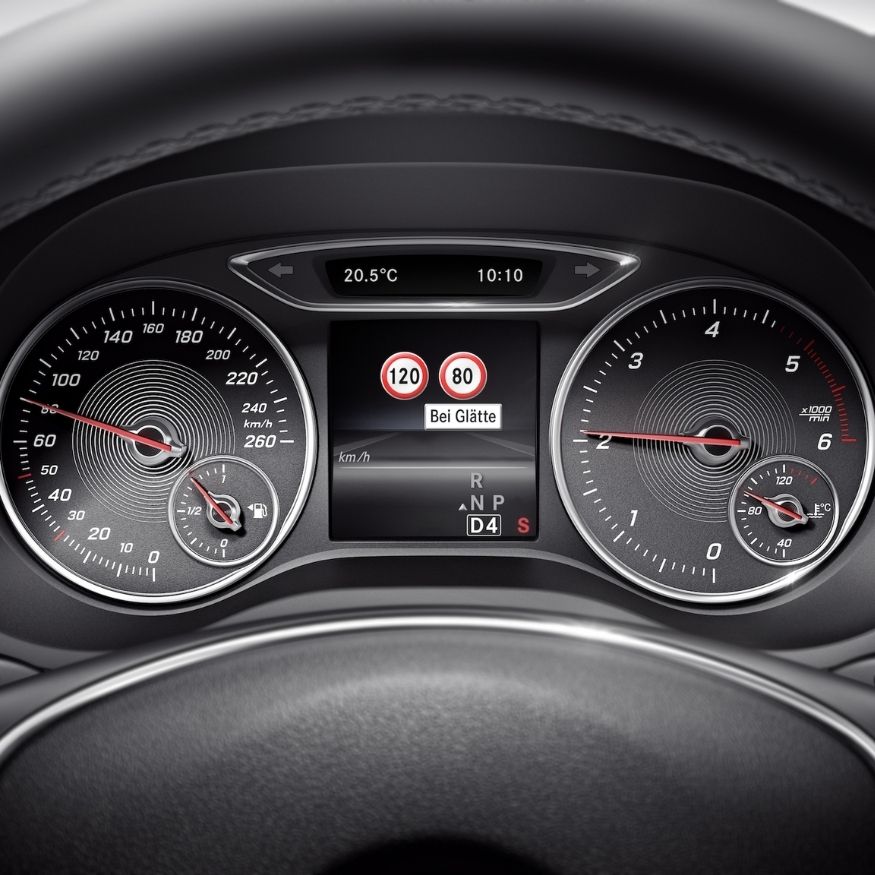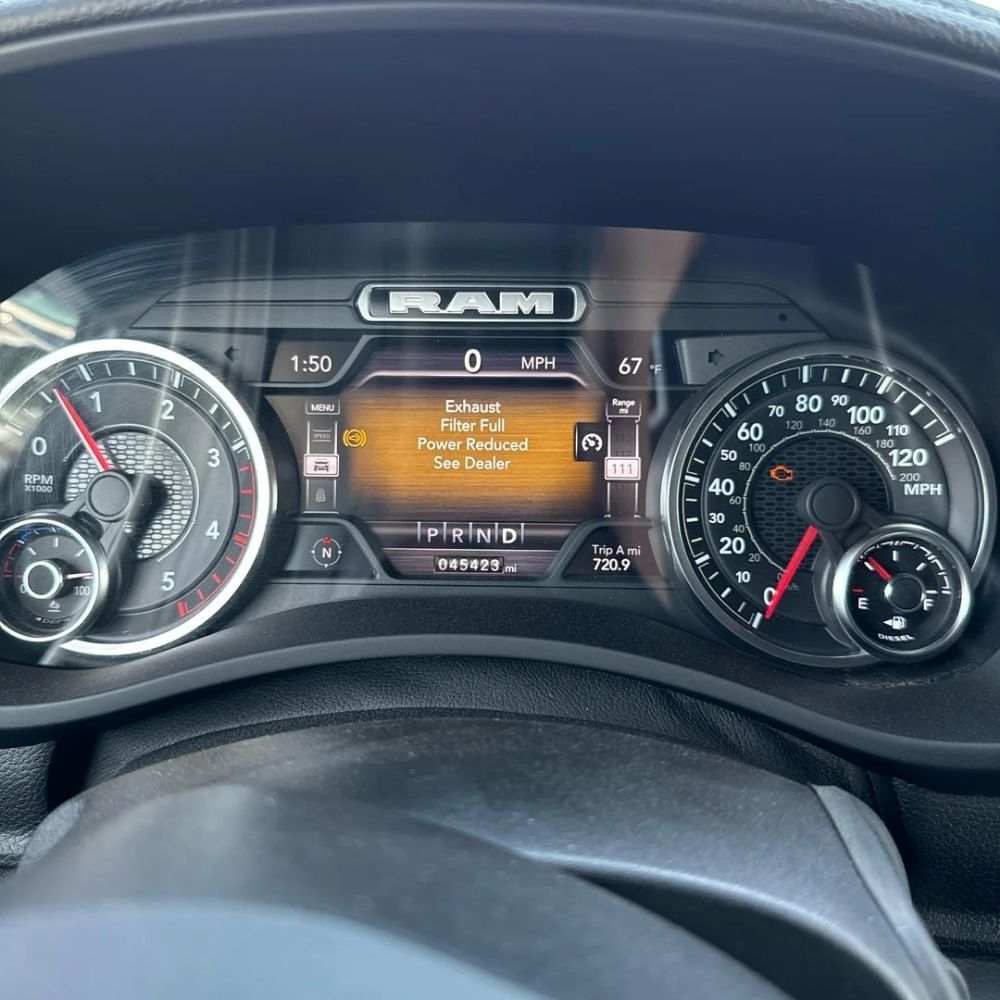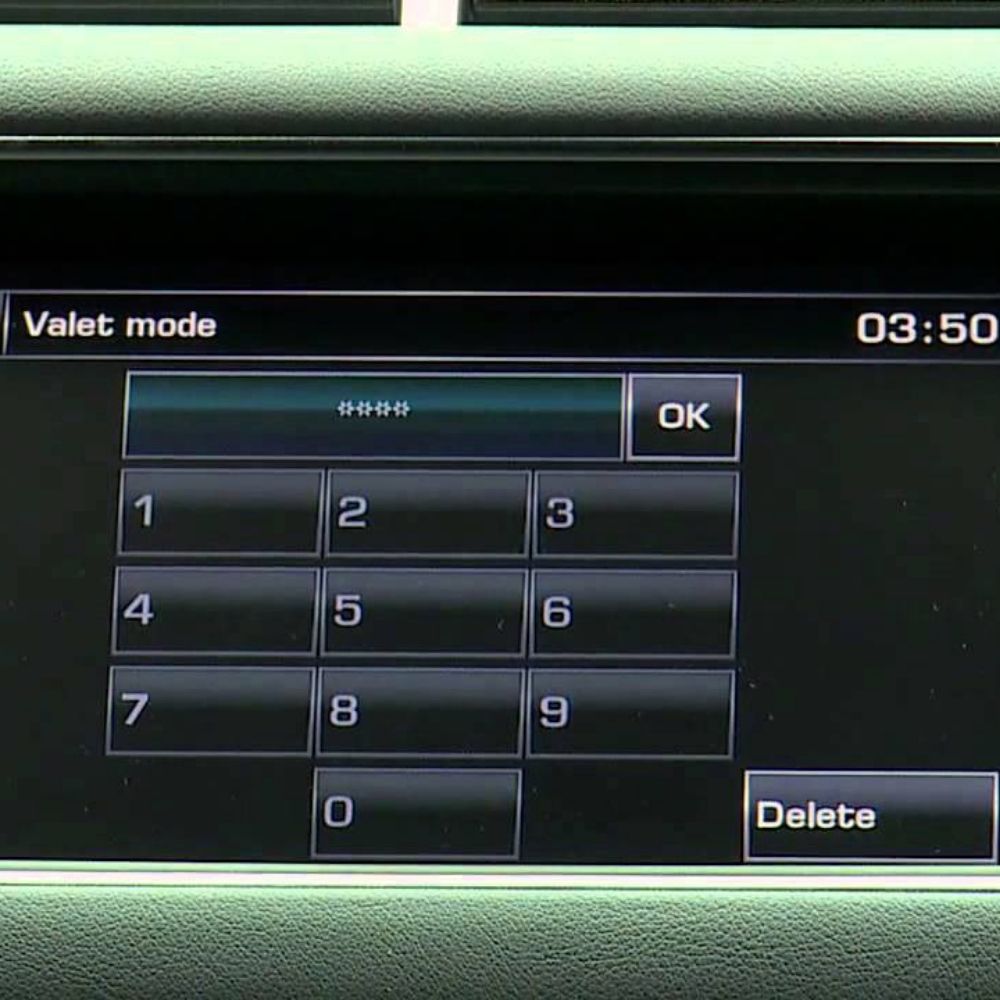
What Does 9D44 BMW Code Indicate And How To Fix
Contents
- 1. Understanding the 9D44 BMW Code
- 1.1. Common Causes of the 9D44 Code
- 1.2. Symptoms Associated with the 9D44 Code
- 1.3. Initial Troubleshooting Steps
- 2. Diagnostic Procedures for the 9D44 BMW Code
- 2.1. Electrical System Checks
- 2.2. Alarm System Testing
- 2.3. Voltage Supply Analysis
- 2.4 Using BMW Diagnostic Tools
- 3. Repair Solutions for the 9D44 BMW Code
- 3.1. Battery Replacement
- 3.2. Wiring Repair
- 3.3. Alarm System Component Replacement
- 3.4. Professional Assistance
- 4. Preventing Future Issues
- 4.1. Regular Battery Maintenance
- 4.2. Wiring Inspection and Maintenance
- 4.3. Alarm System Maintenance
- 4.4. Professional Check-Ups
- 5. Addressing Related BMW Error Codes
- 5.1. Common Related Error Codes
- 5.2. Strategies for Managing Multiple Error Codes
- 5.3. Resources for Further Assistance
- 6. The Role of AutoExplain.com in Resolving BMW Error Codes
- 6.1. Remote Diagnostic Support
- 6.2. Expert Guidance and Advice
- 6.3. Remote Programming and Coding
- 6.4. Training and Education
- 6.5. Contact Information
- 7. Cost Analysis of Addressing the 9D44 BMW Code
- 7.1. DIY Repair Costs
- 7.2. Professional Repair Costs
- 7.3. Factors Influencing Costs
- 7.4. Balancing Cost and Expertise
- 8. The Importance of Staying Updated with BMW Technology
- 8.1. Emerging Technologies in BMW Vehicles
- 8.2. Adapting to Technological Advancements
- 8.3. Resources for Staying Updated
- 9. FAQ: Addressing Common Questions About the 9D44 BMW Code
- 10. Conclusion: Ensuring Optimal Performance with AutoExplain.com
The 9d44 Bmw Code indicates “Alarm memory: voltage-supply tampering,” suggesting potential issues with the vehicle’s power supply or alarm system. Addressing this code requires a systematic approach to diagnose and rectify the underlying problem, ensuring the car’s electrical systems function reliably. Contact AutoExplain.com for expert assistance in resolving this issue promptly and effectively.
1. Understanding the 9D44 BMW Code
The 9D44 BMW code, specifically “Alarm memory: voltage-supply tampering,” signifies that the car’s alarm system has detected irregularities in the voltage supply. This can happen due to various reasons, from a failing battery to wiring issues. This section will cover the common causes, symptoms, and initial troubleshooting steps to understand the problem better.
1.1. Common Causes of the 9D44 Code
Several factors can trigger the 9D44 BMW code, including:
- Failing Battery: A weak or failing battery can cause voltage fluctuations, triggering the alarm system’s memory.
- Loose Battery Connections: Corroded or loose battery terminals can disrupt the power supply, leading to voltage tampering alerts.
- Faulty Wiring: Damaged or deteriorated wiring can cause voltage drops or spikes, affecting the alarm system.
- Alternator Issues: An improperly functioning alternator may not provide a stable voltage supply, leading to irregularities.
- Alarm System Malfunctions: In rare cases, the alarm system itself might be malfunctioning, generating false voltage tampering alerts.
1.2. Symptoms Associated with the 9D44 Code
Several symptoms may accompany the 9D44 code, indicating a potential electrical issue:
- Alarm System Beeping: Intermittent or random beeping from the car alarm, even when the car is not armed.
- Difficulty Starting the Car: Voltage supply issues can prevent the car from starting or cause it to stall shortly after starting.
- Electrical Component Malfunctions: Problems with the power supply can affect various electrical components, such as lights, radio, or central locking.
- Dashboard Warning Lights: Illumination of various warning lights on the dashboard, indicating electrical system faults.
- Key Fob Issues: Inability to unlock or lock the car using the key fob, or the need to use the emergency key.
1.3. Initial Troubleshooting Steps
Before diving into complex diagnostics, consider these initial troubleshooting steps:
- Check Battery Condition: Test the battery voltage using a multimeter to ensure it is within the acceptable range (typically 12.6V when the engine is off).
- Inspect Battery Connections: Examine the battery terminals and connections for corrosion or looseness. Clean and tighten as necessary.
- Review Recent Repairs: Consider any recent repairs or modifications to the car’s electrical system that might have introduced the problem.
- Use a Code Scanner: Clear the 9D44 code using a code scanner and see if it reappears. If it does, proceed with further diagnostics.
2. Diagnostic Procedures for the 9D44 BMW Code
A systematic diagnostic approach is essential to pinpoint the exact cause of the 9D44 BMW code. This section outlines detailed steps for electrical system checks, alarm system testing, and voltage supply analysis.
2.1. Electrical System Checks
Begin by thoroughly inspecting the car’s electrical system:
- Battery Load Test: Perform a load test on the battery to check its ability to maintain voltage under load. A failing battery should be replaced.
- Alternator Output Test: Use a multimeter to measure the alternator’s output voltage while the engine is running. It should typically be between 13.5V and 14.5V.
- Wiring Inspection: Inspect the wiring harness for any signs of damage, such as frayed wires, corrosion, or loose connections. Pay close attention to wiring near the battery, alternator, and alarm system.
- Ground Connection Check: Ensure all ground connections are secure and free from corrosion. Poor ground connections can cause voltage irregularities.
2.2. Alarm System Testing
Next, focus on testing the alarm system:
- Alarm Module Inspection: Locate the alarm system module and inspect it for any physical damage or signs of corrosion.
- Voltage Supply to Alarm Module: Check the voltage supply to the alarm module using a multimeter. Ensure it receives a stable voltage within the specified range.
- Alarm Trigger Testing: Test the alarm system by simulating various triggers, such as opening doors or the trunk, to see if it responds correctly.
- Alarm System Reset: Try resetting the alarm system to its default settings. Refer to the car’s owner’s manual or a repair manual for instructions.
2.3. Voltage Supply Analysis
Perform a detailed analysis of the voltage supply:
- Voltage Drop Test: Conduct a voltage drop test on critical circuits to identify any excessive voltage drops, which can indicate wiring issues.
- Parasitic Draw Test: Perform a parasitic draw test to determine if any components are drawing excessive current when the car is off. This can drain the battery and cause voltage fluctuations.
- Scan for Additional Codes: Use a BMW-specific scan tool to check for any other fault codes related to the electrical system or alarm system. These codes can provide additional clues.
2.4 Using BMW Diagnostic Tools
BMW diagnostic tools can significantly aid in identifying the root cause of the 9D44 code by providing in-depth system analysis and specific fault information.
- BMW ISTA (Integrated Service Technical Application): This is the official diagnostic software used by BMW technicians. It offers comprehensive diagnostic capabilities, including reading and clearing fault codes, performing guided diagnostics, and providing repair instructions.
- INPA (Interface for Protocol Analysis): A popular tool among BMW enthusiasts and technicians, INPA allows direct access to vehicle control modules for diagnostics and programming.
- DIS (Diagnostic Information System): An older diagnostic system, DIS is still used by some technicians for older BMW models. It provides similar functionalities to ISTA but with a different interface.
- Carly for BMW: A mobile app that connects to the car via an OBD adapter, Carly offers basic diagnostic functions, coding options, and vehicle information.
- Foxwell NT510 Elite BMW Scanner: A handheld scanner that provides comprehensive diagnostics for BMW vehicles, including reading and clearing fault codes, performing adaptations, and accessing live data.
Using these tools, a technician can perform advanced diagnostics such as:
- Reading and Interpreting Fault Codes: BMW diagnostic tools provide detailed descriptions of fault codes, helping technicians understand the nature of the problem.
- Live Data Monitoring: Monitoring live data from various sensors and modules can help identify abnormalities in voltage, current, and other parameters.
- Actuator Testing: Actuator tests allow technicians to activate specific components, such as relays or solenoids, to verify their functionality.
- Adaptations and Programming: Some diagnostic tools can perform adaptations and programming functions, which may be necessary after replacing certain components.
By utilizing these diagnostic tools effectively, technicians can pinpoint the root cause of the 9D44 BMW code and implement the appropriate repairs. Contact AutoExplain.com for expert guidance on using these tools and interpreting the diagnostic results.
3. Repair Solutions for the 9D44 BMW Code
Based on the diagnostic findings, several repair solutions can address the 9D44 BMW code. This section provides step-by-step instructions for battery replacement, wiring repair, and alarm system component replacement.
3.1. Battery Replacement
If the battery is identified as the culprit, follow these steps for replacement:
- Gather Tools and Materials: You’ll need a new battery, socket set, wrench, battery terminal cleaner, and gloves.
- Disconnect the Negative Terminal: Use a wrench to loosen the nut on the negative (-) battery terminal and carefully disconnect the cable.
- Disconnect the Positive Terminal: Repeat the process for the positive (+) battery terminal.
- Remove the Battery Hold-Down: Remove any clamps or brackets securing the battery in place.
- Lift Out the Old Battery: Carefully lift the old battery out of the tray, keeping it upright to avoid spills.
- Clean the Battery Tray and Terminals: Clean the battery tray and terminals using a battery terminal cleaner.
- Install the New Battery: Place the new battery in the tray, ensuring it is properly aligned.
- Secure the Battery Hold-Down: Reinstall the clamps or brackets to secure the battery.
- Connect the Positive Terminal: Connect the positive (+) battery cable and tighten the nut.
- Connect the Negative Terminal: Connect the negative (-) battery cable and tighten the nut.
- Verify Proper Installation: Ensure the battery is securely installed and the connections are tight.
- Register the New Battery: Use a BMW-specific scan tool to register the new battery with the car’s computer. This step is crucial for proper charging and battery management.
3.2. Wiring Repair
For wiring issues, follow these steps:
- Identify Damaged Wiring: Locate the damaged wiring using a visual inspection and a multimeter to check for continuity.
- Disconnect the Battery: Disconnect the negative (-) battery terminal to prevent electrical shorts.
- Repair or Replace Wiring: Depending on the extent of the damage, either repair the wiring by splicing in a new section or replace the entire wire.
- Insulate the Repair: Use electrical tape or heat shrink tubing to properly insulate the repair.
- Secure the Wiring: Secure the wiring harness to prevent further damage.
- Reconnect the Battery: Reconnect the negative (-) battery terminal.
- Test the Repair: Use a multimeter to verify the repair and ensure proper voltage.
3.3. Alarm System Component Replacement
If an alarm system component is faulty, follow these steps:
- Identify the Faulty Component: Use diagnostic tools to pinpoint the specific component causing the issue.
- Disconnect the Battery: Disconnect the negative (-) battery terminal.
- Remove the Old Component: Carefully remove the faulty component, following the manufacturer’s instructions.
- Install the New Component: Install the new component, ensuring it is properly connected.
- Reconnect the Battery: Reconnect the negative (-) battery terminal.
- Test the System: Test the alarm system to ensure it is functioning correctly.
- Program the New Component: Some alarm system components may require programming to be properly integrated with the car’s computer.
3.4. Professional Assistance
If you are not comfortable performing these repairs yourself, seek professional assistance from a qualified BMW technician. AutoExplain.com offers remote support and expert guidance to help you resolve the 9D44 BMW code efficiently. Contact us via WhatsApp at +1(936)2896695 or email at [email protected] for assistance.
4. Preventing Future Issues
Preventive maintenance can help avoid the recurrence of the 9D44 BMW code and other electrical issues. This section outlines essential maintenance tips and best practices for ensuring long-term reliability.
4.1. Regular Battery Maintenance
- Check Battery Voltage: Regularly check the battery voltage to ensure it is within the acceptable range.
- Clean Battery Terminals: Clean the battery terminals periodically to prevent corrosion.
- Secure Battery Connections: Ensure the battery connections are tight and secure.
- Avoid Deep Discharges: Avoid leaving the car unused for extended periods, as this can lead to deep battery discharges.
- Use a Battery Tender: If the car will be stored for a long time, use a battery tender to maintain the battery’s charge.
4.2. Wiring Inspection and Maintenance
- Inspect Wiring Regularly: Periodically inspect the wiring harness for any signs of damage.
- Protect Wiring from Damage: Protect the wiring from physical damage by using wire looms and securing it properly.
- Repair Wiring Promptly: Repair any damaged wiring promptly to prevent further issues.
- Avoid Overloading Circuits: Avoid overloading electrical circuits by adding too many accessories.
4.3. Alarm System Maintenance
- Test the Alarm System: Regularly test the alarm system to ensure it is functioning correctly.
- Keep the Alarm System Clean: Keep the alarm system components clean and free from debris.
- Address Alarm System Issues Promptly: Address any alarm system issues promptly to prevent them from escalating.
4.4. Professional Check-Ups
Schedule regular check-ups with a qualified BMW technician to inspect the electrical system and alarm system. Professional diagnostics can identify potential issues before they lead to major problems. AutoExplain.com offers remote support and expert guidance to help you maintain your BMW’s electrical systems effectively.
5. Addressing Related BMW Error Codes
When dealing with the 9D44 BMW code, it’s beneficial to be aware of related error codes that might provide additional insights into the vehicle’s condition. Addressing these codes collectively can lead to a more comprehensive and effective repair.
5.1. Common Related Error Codes
- A6CF: AUC sensor
- 9319: Undervoltage in the vehicle electrical system
- A104: Supply voltage too low
- E104: CAS: Control unit fault
- D904: No message from the anti-theft alarm system
5.2. Strategies for Managing Multiple Error Codes
When encountering multiple error codes, follow these strategies for efficient diagnosis and repair:
- Prioritize Codes: Identify the most critical error codes that directly impact vehicle operation.
- Investigate Interdependencies: Determine if certain error codes are triggering others, indicating a common underlying issue.
- Clear and Re-scan: Clear all error codes and re-scan the system to see which codes reappear. This helps identify persistent issues.
- Systematic Approach: Address each error code systematically, starting with the most likely causes based on symptoms and diagnostic information.
- Professional Consultation: Seek expert advice from AutoExplain.com for assistance in interpreting and addressing complex combinations of error codes.
5.3. Resources for Further Assistance
- BMW Forums: Online communities like Bimmerforums and BMW Forums provide valuable insights from other BMW owners and technicians.
- Repair Manuals: Official BMW repair manuals offer detailed procedures and specifications for diagnosing and repairing various issues.
- AutoExplain.com: AutoExplain.com provides remote support, diagnostic assistance, and expert guidance for resolving BMW error codes.
6. The Role of AutoExplain.com in Resolving BMW Error Codes
AutoExplain.com offers comprehensive services designed to assist technicians and BMW owners in resolving complex error codes like the 9D44. Our expertise, remote support capabilities, and commitment to quality make us a valuable partner in maintaining your vehicle’s performance.
6.1. Remote Diagnostic Support
AutoExplain.com provides remote diagnostic support to help you pinpoint the root cause of the 9D44 BMW code. Our experienced technicians can connect remotely to your vehicle’s diagnostic system and perform in-depth analysis.
6.2. Expert Guidance and Advice
Our team of BMW experts offers guidance and advice on troubleshooting and repairing various issues. We can provide step-by-step instructions, wiring diagrams, and other resources to assist you in the repair process.
6.3. Remote Programming and Coding
AutoExplain.com offers remote programming and coding services to ensure that your BMW’s systems are functioning correctly after repairs. Whether you need to register a new battery or program a replacement component, we can help.
6.4. Training and Education
We provide training and educational resources to help technicians and BMW owners enhance their knowledge and skills. Our training programs cover various topics, including diagnostics, repair procedures, and system maintenance.
6.5. Contact Information
For expert assistance with the 9D44 BMW code and other issues, contact AutoExplain.com:
- Address: 1500 N Grant ST Sten Denver, CO 80203
- WhatsApp: +1(936)2896695
- Email: [email protected]
- Website: AutoExplain.com
7. Cost Analysis of Addressing the 9D44 BMW Code
Understanding the potential costs associated with addressing the 9D44 BMW code is essential for budgeting and making informed decisions about repair options. This section provides a detailed breakdown of expenses for DIY repairs versus professional services.
7.1. DIY Repair Costs
- Diagnostic Tools:
- OBD-II Scanner: $20 – $200
- BMW-Specific Scan Tool: $100 – $500
- Replacement Parts:
- Battery: $150 – $300
- Wiring Repair Kit: $20 – $50
- Alarm System Component: $50 – $500 (depending on the component)
- Tools and Materials:
- Socket Set: $30 – $100
- Multimeter: $20 – $50
- Electrical Tape, Wire Connectors, etc.: $10 – $30
- Total Estimated DIY Cost: $230 – $1180
7.2. Professional Repair Costs
- Diagnostic Fee: $100 – $200
- Labor Costs: $80 – $150 per hour
- Replacement Parts:
- Battery: $200 – $400
- Wiring Repair: $100 – $300
- Alarm System Component: $100 – $800 (depending on the component)
- Total Estimated Professional Cost: $400 – $1500+
7.3. Factors Influencing Costs
- Severity of the Issue: Minor issues like loose connections will be less expensive to fix than major component failures.
- Type of Replacement Parts: OEM (Original Equipment Manufacturer) parts are typically more expensive than aftermarket alternatives.
- Labor Rates: Labor rates vary depending on the location and the expertise of the technician.
- Additional Repairs: Addressing related issues or performing additional maintenance can increase the overall cost.
7.4. Balancing Cost and Expertise
DIY repairs can save money, but they require technical knowledge and the right tools. Professional services offer expertise and peace of mind, but they come at a higher cost. Consider your skills, available resources, and the complexity of the issue when deciding between DIY and professional repair options. AutoExplain.com can provide remote guidance to assist with DIY repairs or connect you with trusted professionals in your area.
8. The Importance of Staying Updated with BMW Technology
As BMW continues to innovate with advanced technology, staying updated is essential for technicians and owners alike. This section explores the latest technological trends in BMW vehicles and how to adapt to these changes effectively.
8.1. Emerging Technologies in BMW Vehicles
- Advanced Driver-Assistance Systems (ADAS): Features like lane-keeping assist, adaptive cruise control, and automatic emergency braking are becoming standard in newer BMW models.
- Electric Vehicle (EV) Technology: BMW is expanding its lineup of electric vehicles, incorporating advanced battery technology and charging systems.
- Connected Car Services: BMW ConnectedDrive offers a range of services, including remote vehicle access, real-time traffic information, and over-the-air software updates.
- Digital Cockpit: BMW’s digital cockpit features high-resolution displays and advanced infotainment systems, enhancing the driving experience.
8.2. Adapting to Technological Advancements
- Continuous Learning: Stay updated with the latest BMW technology through training programs, workshops, and online resources.
- Investing in Diagnostic Tools: Acquire advanced diagnostic tools capable of handling complex systems and software updates.
- Networking with Experts: Connect with other technicians and experts in the field to share knowledge and best practices.
- Utilizing Online Resources: Leverage online forums, repair manuals, and technical databases to access the latest information.
8.3. Resources for Staying Updated
- BMW Technical Training Programs: BMW offers a range of technical training programs for technicians, covering various topics and skill levels.
- Industry Conferences and Trade Shows: Attend industry conferences and trade shows to learn about the latest technology and network with experts.
- Online Forums and Communities: Participate in online forums and communities to exchange information and seek advice from other professionals.
- AutoExplain.com: AutoExplain.com provides resources, training, and expert support to help you stay updated with BMW technology.
9. FAQ: Addressing Common Questions About the 9D44 BMW Code
This FAQ section addresses common questions related to the 9D44 BMW code, providing concise answers and expert insights.
1. What does the 9D44 BMW code mean?
The 9D44 BMW code indicates “Alarm memory: voltage-supply tampering,” suggesting potential issues with the vehicle’s power supply or alarm system.
2. What are the common causes of the 9D44 code?
Common causes include a failing battery, loose battery connections, faulty wiring, alternator issues, and alarm system malfunctions.
3. What are the symptoms associated with the 9D44 code?
Symptoms may include alarm system beeping, difficulty starting the car, electrical component malfunctions, dashboard warning lights, and key fob issues.
4. How can I diagnose the 9D44 code?
Diagnostic steps include electrical system checks, alarm system testing, voltage supply analysis, and using BMW diagnostic tools.
5. What are the repair solutions for the 9D44 code?
Repair solutions may involve battery replacement, wiring repair, alarm system component replacement, and professional programming.
6. How can I prevent the 9D44 code from recurring?
Preventive measures include regular battery maintenance, wiring inspection, alarm system maintenance, and professional check-ups.
7. Can I fix the 9D44 code myself?
DIY repairs are possible if you have technical knowledge and the right tools, but professional assistance is recommended for complex issues.
8. How much does it cost to fix the 9D44 code?
DIY repair costs range from $230 to $1180, while professional repair costs range from $400 to $1500 or more.
9. What related error codes should I be aware of?
Related error codes include A6CF, 9319, A104, E104, and D904, which can provide additional insights into the vehicle’s condition.
10. Where can I get expert assistance with the 9D44 code?
AutoExplain.com offers remote diagnostic support, expert guidance, and programming services to help you resolve the 9D44 BMW code.
10. Conclusion: Ensuring Optimal Performance with AutoExplain.com
Addressing the 9D44 BMW code requires a thorough understanding of the vehicle’s electrical system and alarm system. By following the diagnostic procedures and repair solutions outlined in this article, you can effectively resolve the issue and restore your BMW’s performance. AutoExplain.com is dedicated to providing you with the expert support and resources you need to maintain your BMW’s optimal performance. Contact us today to experience the benefits of our remote diagnostic services, expert guidance, and comprehensive training programs. Reach out via WhatsApp at +1(936)2896695 or email at [email protected]. You can also visit our website at AutoExplain.com for more information.


How to Activate Mercedes-Benz Traffic Sign Assist Function

How to Fix the “Exhaust Filter Full” Warning Message on the Instrument Cluster of JLR Vehicles

How to reset valet mode L358







